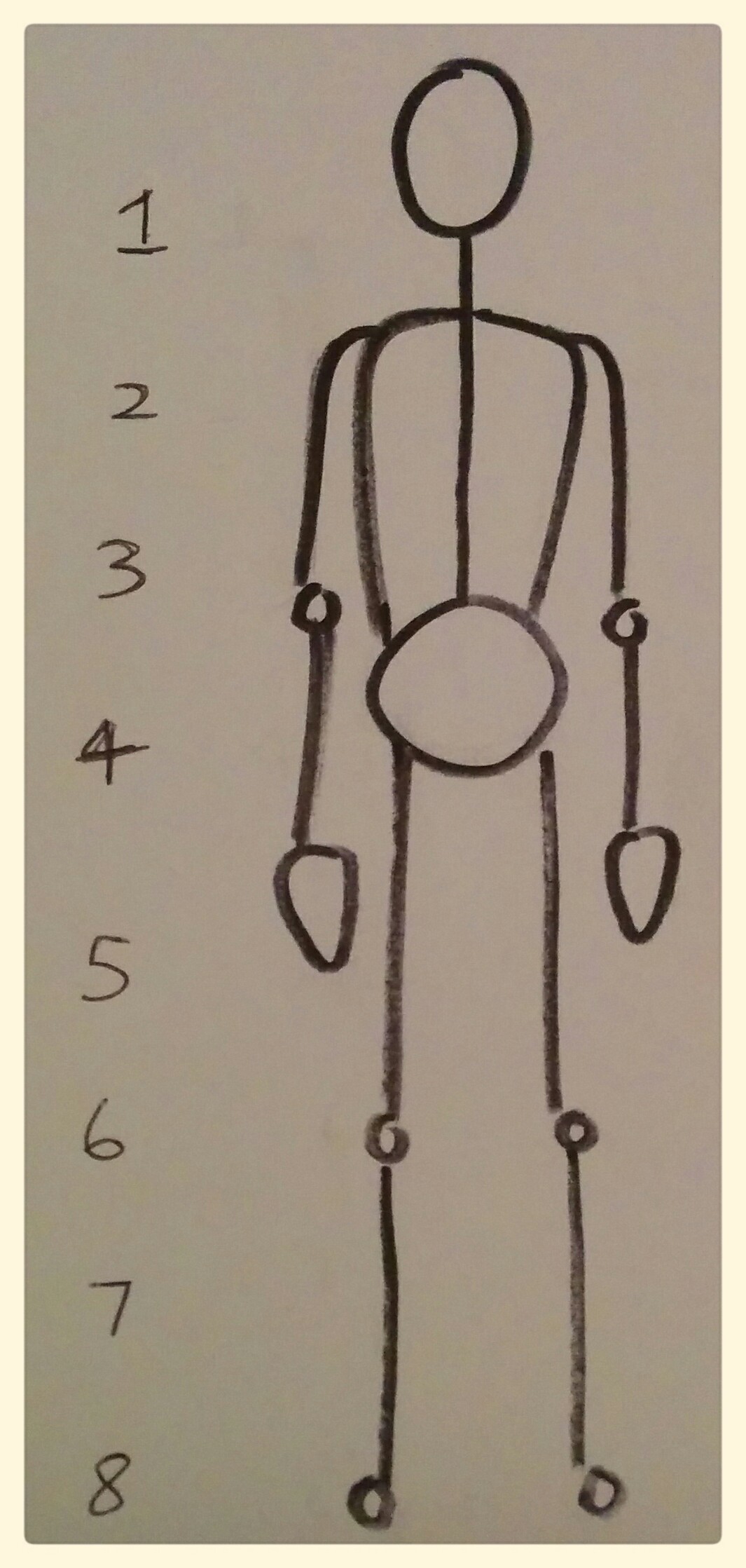At Melbourne Art Class we are offering two Life Drawing Courses in November. Tutored Life Drawing with Jesse Dayan and Painting from the Figure with Marco Corsini. We’d love to you join us in the pursuit of mastering the human figure!
It may feel like it obstructs your creativity, however learning the basic proportions of the human figure will help you produce accurate first drawings. I know I have reached a near finishing-point in a sketch only to realise that the shoulders are not wide enough, or the torso is too long. With practise, and really seeing and measuring the human form, these inaccuracies will diminish.
You can measure the below proportions of the body on yourself. Some people are surprised when they find out that the bottom of their nose lines up with their ear, or that they are eight heads tall. We’ve listed these proportions below as a basic guide to the human body (an average adult):
An adult’s head:
When you draw the oval of your head, divide it vertically and horizontally. Front on, you can fit five eyes along the horizontal line (not including the ears); draw your two eyes in the middle with one left in between. The pupils will be on this line.
The bottom of the nose is about one and a half eye widths down from the eye line.
One eye width beneath the nose are the lips.
The ears start from the top of the eye and finish at the top of the mouth.
An adult’s body:
A “perfect” adult’s body (developed during the Renaissance) measures eight heads high. It helps if you draw the head and then number another seven heads beneath it (see diagram below).
Draw the pelvis between spaces three and four as a flattened circle. This is important because it is the body’s centre of gravity and stability. You can then draw the line of the spine from the head to the top of the pelvis.
 The thighs will fill the space between four and six, and the calves between seven and eight.
The thighs will fill the space between four and six, and the calves between seven and eight.
The torso begins halfway between one and two and touches the pelvis.
The shoulders are three head widths on the top of the torso line.
Draw a line down from the top of the shoulders to the fourth head. These are the arms. Elbow joints sit at space number three, wrists at four and your hands take up the space to five.
Practicing life drawing
These basic proportions will aid you to see the human body in sections and will help you produce a more accurate drawing.
It is important to practice as much as you can and get exposure to different human forms if you want to master drawing the figure.
